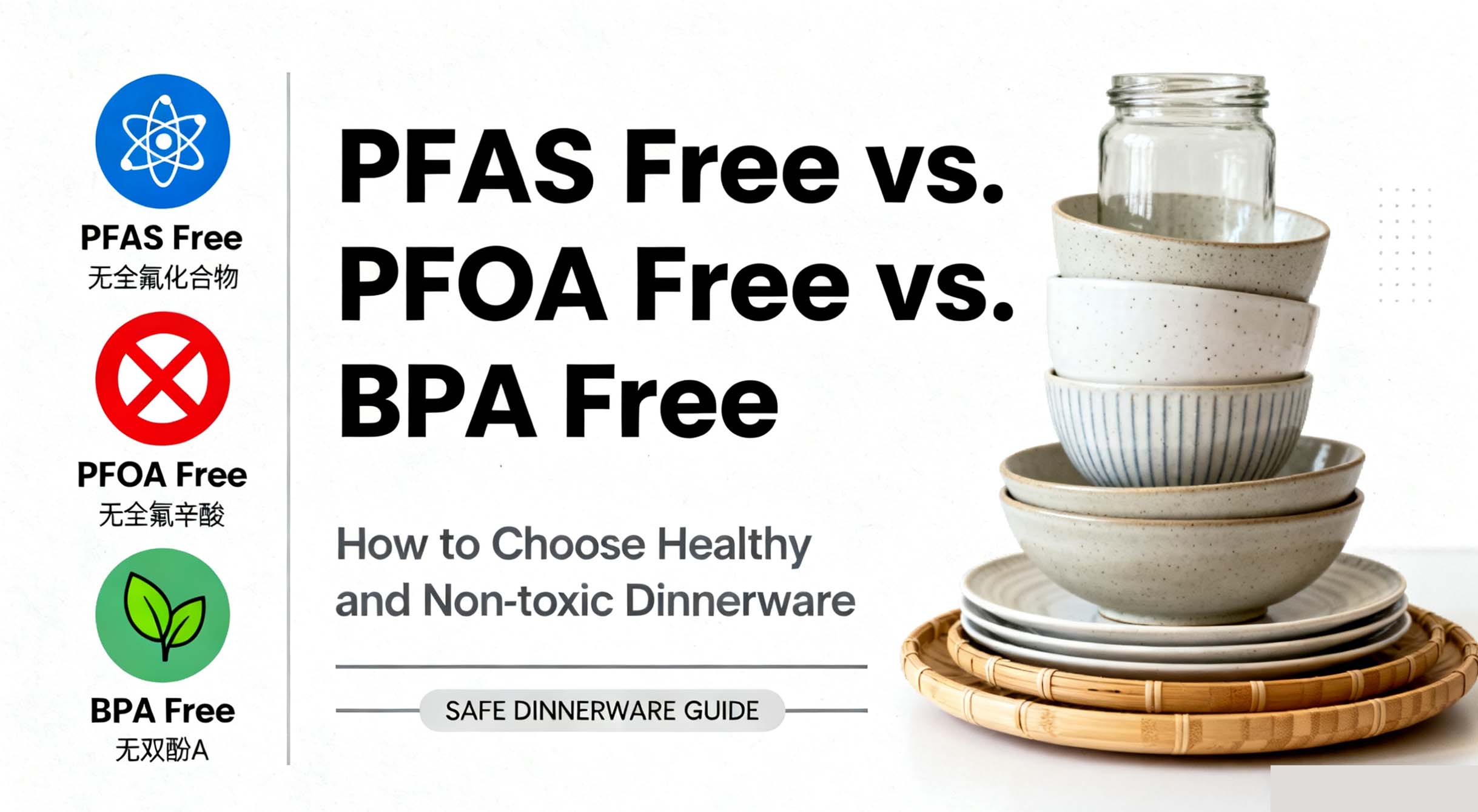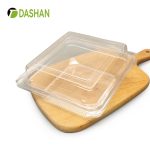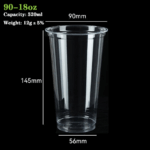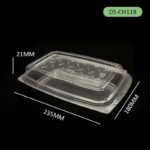This guide explains PFAS-free, PFOA-free, and BPA-free labels and their importance for choosing safe, non-toxic dinnerware. Learn how to protect your health and the environment by understanding these chemicals and selecting the right materials for everyday use.
Introduction
In a world increasingly focused on health and sustainability, the materials in our everyday dinnerware have gained significant attention. Items like plates, bowls, cups, and cookware come into direct contact with food, and the chemicals used in their production can have lasting effects on human health and the environment. Terms such as PFAS-free, PFOA-free, and BPA-free have become common on product labels, but many consumers are unclear about what these terms truly mean.
PFAS (per- and polyfluoroalkyl substances) and PFOA (perfluorooctanoic acid) are widely used for creating non-stick and grease-resistant surfaces, while BPA (bisphenol A) is prevalent in plastics and epoxy resins. Research has linked these chemicals to a variety of health concerns, including endocrine disruption, developmental problems, and certain cancers. As awareness grows, manufacturers are introducing chemical-free alternatives, and consumers now have the power to make informed, safer choices. This article provides a detailed comparison of PFAS-free, PFOA-free, and BPA-free dinnerware, examines their health and environmental impacts, and offers guidance on selecting safe tableware.
What Does PFAS-Free Mean?

Definition and Overview
PFAS refers to a broad family of man-made chemicals characterized by strong carbon-fluorine bonds, which make them resistant to heat, water, and oil. These compounds have been widely applied in industrial and consumer products since the mid-20th century, including non-stick cookware, stain-resistant fabrics, greaseproof food packaging, and firefighting foams.
A label indicating PFAS-free ensures that none of these fluorinated chemicals were intentionally added during the manufacturing process. For dinnerware, this is particularly important because PFAS are persistent environmental pollutants that accumulate in ecosystems and human bodies.
Health and Environmental Impacts
Often referred to as “forever chemicals,” PFAS do not break down easily. Long-term exposure has been associated with thyroid disorders, immune suppression, high cholesterol, and certain cancers. Infants and young children are especially vulnerable, as PFAS can cross the placenta and be present in breast milk.
Regulatory bodies like the U.S. Environmental Protection Agency (EPA) and the European Chemicals Agency (ECHA) are increasingly imposing limits on PFAS in drinking water and consumer goods. Choosing PFAS-free dinnerware is a proactive step to minimize these risks.
Consumer Considerations
PFAS-free products provide peace of mind that potentially harmful chemicals are not present in your meals. Even ceramic or glass items may contain trace PFAS if recycled materials or contaminated water are used during production. Therefore, direct PFAS-free labeling is crucial for those aiming to reduce chemical exposure.
What Does PFOA-Free Mean?
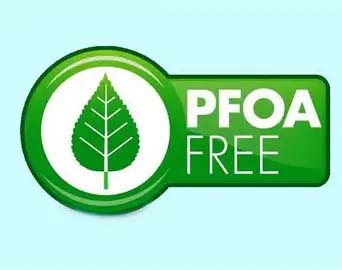
Definition and Background
PFOA, or perfluorooctanoic acid, is a single chemical within the PFAS family. It was commonly used in the production of PTFE, the substance behind many non-stick coatings, including Teflon. While effective for creating durable non-stick surfaces, PFOA is highly persistent in the environment and has been linked to numerous health risks.
A PFOA-free label indicates that this specific chemical is not present in the product. It is a step toward safer consumer goods but does not necessarily guarantee that other PFAS compounds are absent.
Health and Environmental Impacts
Research has linked PFOA exposure to kidney and testicular cancers, liver toxicity, elevated cholesterol, and immune system dysfunction. Studies such as the C8 Health Project provide strong evidence of its dangers. PFOA accumulates in human tissues, often persisting for years.
Global regulatory actions, including the Stockholm Convention, have aimed to phase out PFOA from manufacturing processes. PFOA-free products are increasingly standard for non-stick cookware, bakeware, and related items.
Consumer Considerations
While PFOA-free labels are a positive indicator, consumers should still consider products labeled PFAS-free for broader protection. Nevertheless, avoiding PFOA significantly reduces exposure to one of the most hazardous substances in this chemical family.
What Does BPA-Free Mean?
Definition and Background
BPA (bisphenol A) is primarily used in polycarbonate plastics and epoxy resins. Unlike PFAS or PFOA, BPA is valued for durability and clarity rather than water or grease resistance. It is commonly found in food containers, water bottles, and epoxy linings of canned goods.
A BPA-free label confirms that bisphenol A was not used in manufacturing. This label is especially important for infant products, but also applies to adult dinnerware and food containers.
Health and Environmental Impacts
BPA is an endocrine disruptor, capable of mimicking estrogen and interfering with hormone systems. Exposure has been associated with reproductive disorders, developmental delays, metabolic issues, and behavioral changes. Prenatal BPA exposure can result in long-term health effects for children, and adult exposure is linked to insulin resistance and cardiovascular risk.
Many BPA-free alternatives contain BPS or BPF, which may carry similar risks. For maximum safety, glass, ceramic, or stainless steel tableware is preferred. Nonetheless, BPA-free products remain safer than conventional plastics for heated items or daily use by children.
Consumer Considerations
Choosing BPA-free items helps reduce exposure to endocrine-disrupting chemicals. Consumers should verify labels and consider the entire production chain, as replacement chemicals may pose unknown risks.
Comparing PFAS-Free, PFOA-Free, and BPA-Free
Understanding the distinctions among these labels is essential:
| Aspect | PFAS-Free | PFOA-Free | BPA-Free |
|---|---|---|---|
| Definition | Excludes all PFAS chemicals | Excludes PFOA specifically | Excludes bisphenol A |
| Chemical Class | Broad family of fluorinated compounds | Single PFAS chemical | Organic compound in plastics |
| Common Uses | Non-stick coatings, greaseproof packaging, textiles | Non-stick cookware | Polycarbonate plastics, epoxy linings |
| Health Risks | Cancer, thyroid disorders, immune suppression | Kidney/testicular cancers, liver toxicity | Hormonal disruption, reproductive/developmental effects |
| Environmental Impact | Persistent, bioaccumulative | Highly persistent, long half-life | Potential leaching into ecosystems |
| Regulations | Emerging global bans | Phased out internationally | Restricted in infant products, migration limits |
| Consumer Implications | Broad protection | Removes high-risk PFOA | Reduces endocrine-disruptor exposure |
Key Takeaways: PFAS-free products provide the broadest safety, PFOA-free targets a high-risk chemical, and BPA-free protects against hormone disruption.
Choosing Safe, Non-Toxic Dinnerware
Guidelines for Selection:
-
Inert materials: Glass, ceramic, porcelain, and stainless steel are naturally free from PFAS, PFOA, and BPA.
-
Non-stick coatings: Opt for products labeled PFAS-free and PFOA-free. Ceramic coatings are a safe alternative to Teflon.
-
Plastic considerations: Choose BPA-free plastics and avoid high heat exposure. Consider alternatives like Tritan™ or stainless steel.
-
Certifications: Look for third-party testing or compliance with food safety standards.
Material Comparison Table:
| Material | PFAS/PFOA-Free | BPA-Free | Notes |
|---|---|---|---|
| Glass / Ceramic / Porcelain | Yes | Yes | Naturally inert; check for lead/cadmium-free glazes |
| Stainless Steel | Yes | Yes | Use food-grade (18/8 or 18/10) |
| Bamboo / Wood | Yes | Yes | Use food-safe finishes |
| Bamboo Fiber Composites | Yes | Yes | Avoid high-heat use |
| Silicone | Yes | Yes | Use food-grade only |
| Plastic (PP, PE) | Often | BPA-free options | Verify codes and heat resistance |
| Melamine | Yes | Yes | Avoid microwaving |
| Disposable Paper Plates | Only if labeled | Yes | Confirm PFAS-free |
| Bagasse / Sugarcane | Yes | Yes | Eco-friendly, compostable |
| PLA / Cornstarch Bioplastics | Yes | Yes | Suitable for cold foods |
Scientific Evidence
Research highlights the health risks of PFAS, PFOA, and BPA:
PFAS/PFOA:
-
Disrupt lipids, thyroid, and immunity
-
Linked to kidney/testicular cancers
-
Long-term low-dose exposure may increase tumors
BPA:
-
Endocrine disruption affecting reproduction and neurological development
-
Widespread exposure with measurable levels in nearly all populations
-
Regulatory bans for infant products and strict EU migration limits
These findings reinforce the importance of choosing PFAS-free, PFOA-free, and BPA-free products.
Conclusion
Selecting chemical-free dinnerware is an effective strategy to protect health and the environment. PFAS-free products eliminate a broad category of persistent chemicals, PFOA-free items remove a particularly hazardous compound, and BPA-free tableware reduces hormone-disrupting exposure from plastics.
Naturally inert materials like glass, ceramic, and stainless steel are safest, while plastics and non-stick coatings require careful evaluation of labels and certifications. By making informed choices, consumers can enjoy safe meals and contribute to a sustainable future.
FAQ
-
What is the difference between PFAS, PFOA, and BPA?
PFAS is a broad chemical family, PFOA is one hazardous PFAS, and BPA is a plastic additive with hormonal effects. -
Why choose PFAS-free dinnerware?
PFAS are persistent and toxic; avoiding them reduces long-term health and environmental risks. -
Is PFOA still used today?
Mostly phased out, but older or imported items may still contain it; check labels. -
What are BPA risks?
BPA may leach into food and disrupt hormones, especially with heated items. -
Are PFAS-free items also BPA-free?
Not necessarily; check multiple labels for comprehensive chemical safety. -
How to identify safe dinnerware?
Look for PFAS-free, PFOA-free, BPA-free, FDA-approved, or compostable certifications. -
What are the best materials for chemical-free dinnerware?
Glass, ceramic, stainless steel, bamboo, bagasse, and PLA bioplastics are all safe options.
References
-
U.S. EPA – “Our Current Understanding of PFAS Risks”
-
ATSDR – PFAS Health Studies
-
American Cancer Society – PFOA and PFAS Chemicals
-
U.S. NTP – Bisphenol A Research
-
EFSA – BPA in Food Contact Materials
-
UNEP – Stockholm Convention on Persistent Pollutants
-
ECHA – PFAS Regulations
-
Environmental Health Perspectives – PFAS, PFOA, BPA Comparison
Disclaimer & Copyright Notice
This article is created by the Dashan Packing editorial and research team.
All information presented here is for educational and industry reference purposes only.
Some data and standards cited in this article are sourced from publicly available materials,
official regulatory documents, or third-party publications, which are properly credited where applicable.
All rights to third-party trademarks, images, and content belong to their respective owners.
If any copyrighted material has been used inadvertently, please contact us at angel@chndashan.com.
We respect intellectual property rights and will promptly remove or revise any material upon verification.


